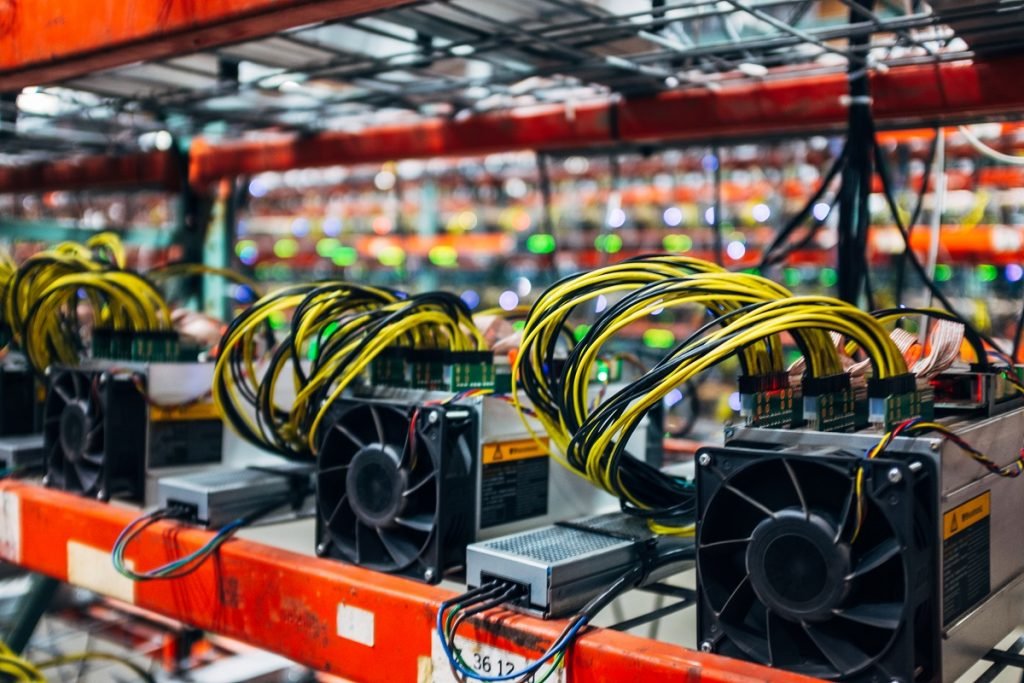Are you an aspiring cryptocurrency miner looking to maximize your returns from Bitcoin mining? If so, you’re in the right place! Bitcoin mining can be a highly rewarding endeavor, especially when done in a mining pool. In this guide, we’ll explore the ins and outs of optimizing Bitcoin mining for mining pools, ensuring that you’re making the most out of your mining efforts. Let’s dive in!
Table of Contents
- Introduction
- Understanding Mining Pools
- Choosing the Right Mining Pool
- Optimizing Hardware and Software
- 4.1 Choosing the Right Hardware
- 4.2 Software Configuration
- Effective Mining Strategies
- 5.1 Pool Mining vs. Solo Mining
- 5.2 Load Balancing Techniques
- Network and Security Considerations
- 6.1 Ensuring Network Stability
- 6.2 Security Measures for Mining Pools
- Monitoring and Analytics
- 7.1 Tracking Mining Performance
- 7.2 Utilizing Analytics Tools
- Regular Maintenance and Upgrades
- 8.1 Keeping Hardware Optimized
- 8.2 Software Updates
- Eco-Friendly Mining Practices
- 9.1 Green Energy Solutions
- 9.2 Sustainable Mining Practices
- Diversifying Your Mining Portfolio
- Managing Rewards and Payouts
- Staying Informed: News and Trends
- Common Challenges and Troubleshooting
- Future of Bitcoin Mining and Pools
- Conclusion
1. Introduction
Bitcoin mining has come a long way since its inception, evolving into a sophisticated process that involves complex algorithms and high-powered hardware. One of the most effective ways to mine Bitcoin is by joining a mining pool, where multiple miners combine their computational resources to increase their chances of solving the cryptographic puzzles that validate transactions on the blockchain.
2. Understanding Mining Pools
Mining pools offer a collaborative approach to mining, allowing participants to share the rewards based on their contributed computing power. This method ensures more consistent earnings compared to solo mining, where the rewards can be sporadic.
3. Choosing the Right Mining Pool
Selecting the right mining pool is crucial for optimizing your Bitcoin mining efforts. Consider factors such as pool fees, payout methods, and the pool’s reputation within the community.
4. Optimizing Hardware and Software
4.1 Choosing the Right Hardware
Investing in high-performance mining hardware is essential for maximizing your mining efficiency. Research and select hardware that provides a balance between hash power and energy consumption.
4.2 Software Configuration
Fine-tune your mining software settings to achieve optimal performance. Adjust variables such as mining intensity and fan speed to strike the right balance between hash rate and temperature.
5. Effective Mining Strategies
5.1 Pool Mining vs. Solo Mining
While solo mining offers complete control, pool mining increases the likelihood of consistent rewards. Evaluate the pros and cons of each approach based on your preferences and resources.
5.2 Load Balancing Techniques
Implement load balancing strategies to distribute mining tasks efficiently among your hardware, preventing overloading and ensuring stable performance.
6. Network and Security Considerations
6.1 Ensuring Network Stability
A stable internet connection is crucial for uninterrupted mining operations. Implement redundancy and failover mechanisms to mitigate connectivity issues.
6.2 Security Measures for Mining Pools
Protect your mining earnings and personal data by following cybersecurity best practices. Utilize strong passwords, enable two-factor authentication, and keep your software updated.
7. Monitoring and Analytics
7.1 Tracking Mining Performance
Regularly monitor your mining pool’s dashboard to assess your hash rate, shares submitted, and earnings. This information helps you identify trends and make informed decisions.
7.2 Utilizing Analytics Tools
Explore third-party analytics tools to gain deeper insights into your mining performance. Analyze historical data to optimize your mining strategies over time.
8. Regular Maintenance and Upgrades
8.1 Keeping Hardware Optimized
Perform routine maintenance on your mining hardware to prevent overheating and extend its lifespan. Clean components, replace thermal paste, and ensure proper ventilation.
8.2 Software Updates
Stay updated with the latest mining software releases. Upgrades often include performance improvements and bug fixes that can enhance your mining efficiency.
9. Eco-Friendly Mining Practices
9.1 Green Energy Solutions
Minimize your carbon footprint by powering your mining operations with renewable energy sources. Consider solar, wind, or hydroelectric power to reduce environmental impact.
9.2 Sustainable Mining Practices
Practice responsible mining by supporting eco-friendly initiatives within the cryptocurrency community. Explore projects focused on offsetting energy consumption through reforestation or carbon credits.
10. Diversifying Your Mining Portfolio
Expand your mining horizons by exploring other cryptocurrencies and algorithms. Diversification can help you adapt to changing market conditions and optimize your overall mining profitability.
11. Managing Rewards and Payouts
Understand your mining pool’s payout structure and schedule. Efficiently manage your earnings, reinvesting or converting as needed to maximize your returns.
12. Staying Informed: News and Trends
Stay up-to-date with the latest developments in Bitcoin mining and blockchain technology. Join mining forums, follow reputable sources, and engage with the community to stay informed.
13. Common Challenges and Troubleshooting
Learn to identify and overcome common mining challenges, such as hardware failures, connectivity issues, and software glitches. Troubleshoot effectively to minimize downtime and maximize productivity.
14. Future of Bitcoin Mining and Pools
Explore emerging trends in Bitcoin mining, such as advancements in hardware technology, scalability solutions, and potential regulatory changes that may impact the industry.
15. Conclusion
Optimizing Bitcoin mining for mining pools requires a strategic approach that combines hardware, software, and operational considerations. By following the guidelines outlined in this comprehensive guide, you can enhance your mining efficiency, increase your rewards, and contribute to the thriving Bitcoin ecosystem.
FAQs
- Is solo mining still profitable in today’s Bitcoin landscape? Solo mining can be challenging for individual miners due to the increasing difficulty and competition. Joining a mining pool is generally a more profitable option.
- What factors should I consider when selecting a mining pool? Factors to consider include pool fees, payout methods, reputation, and the pool’s size and stability.
- Can I switch between mining pools easily? Yes, you can switch between mining pools, but be aware that some pools have specific payout thresholds or waiting periods.
- How do I know if my mining hardware is overheating? Monitoring software or hardware-specific indicators can help you detect overheating. Regularly cleaning and maintaining your hardware also prevent overheating.
- What does the future hold for Bitcoin mining? The future of Bitcoin mining is dynamic and may involve technological advancements, regulatory developments, and shifts in the broader
RELATED POSTS
How to Optimize Bitcoin Mining for Mining Software?
How to Optimize Bitcoin Mining for ASIC Miners: A Comprehensive Guide
How to Optimize Ethereum Mining for ASIC Miners: A Comprehensive Guide


